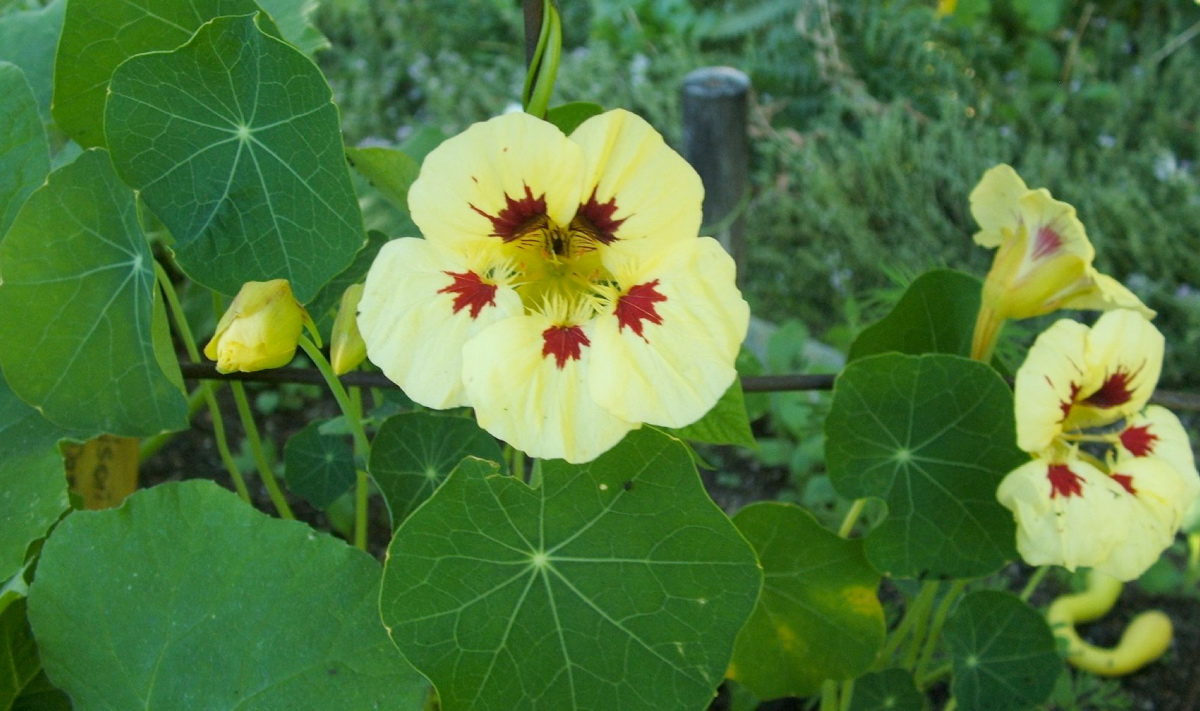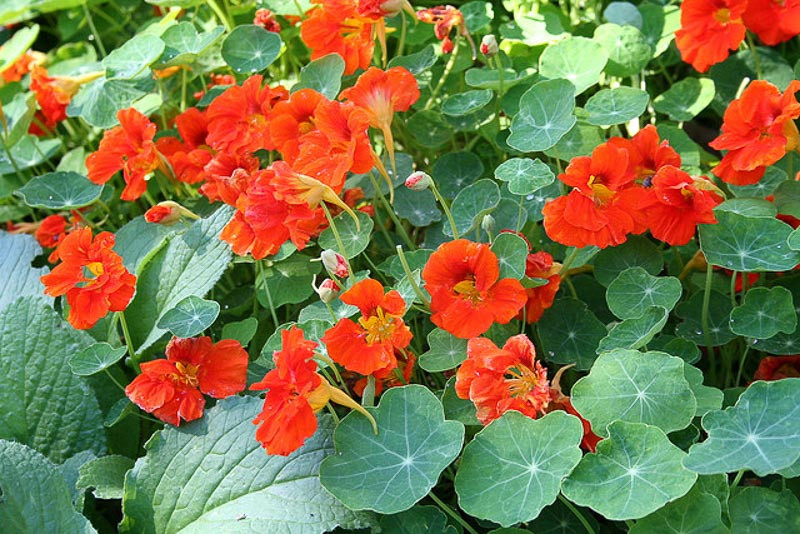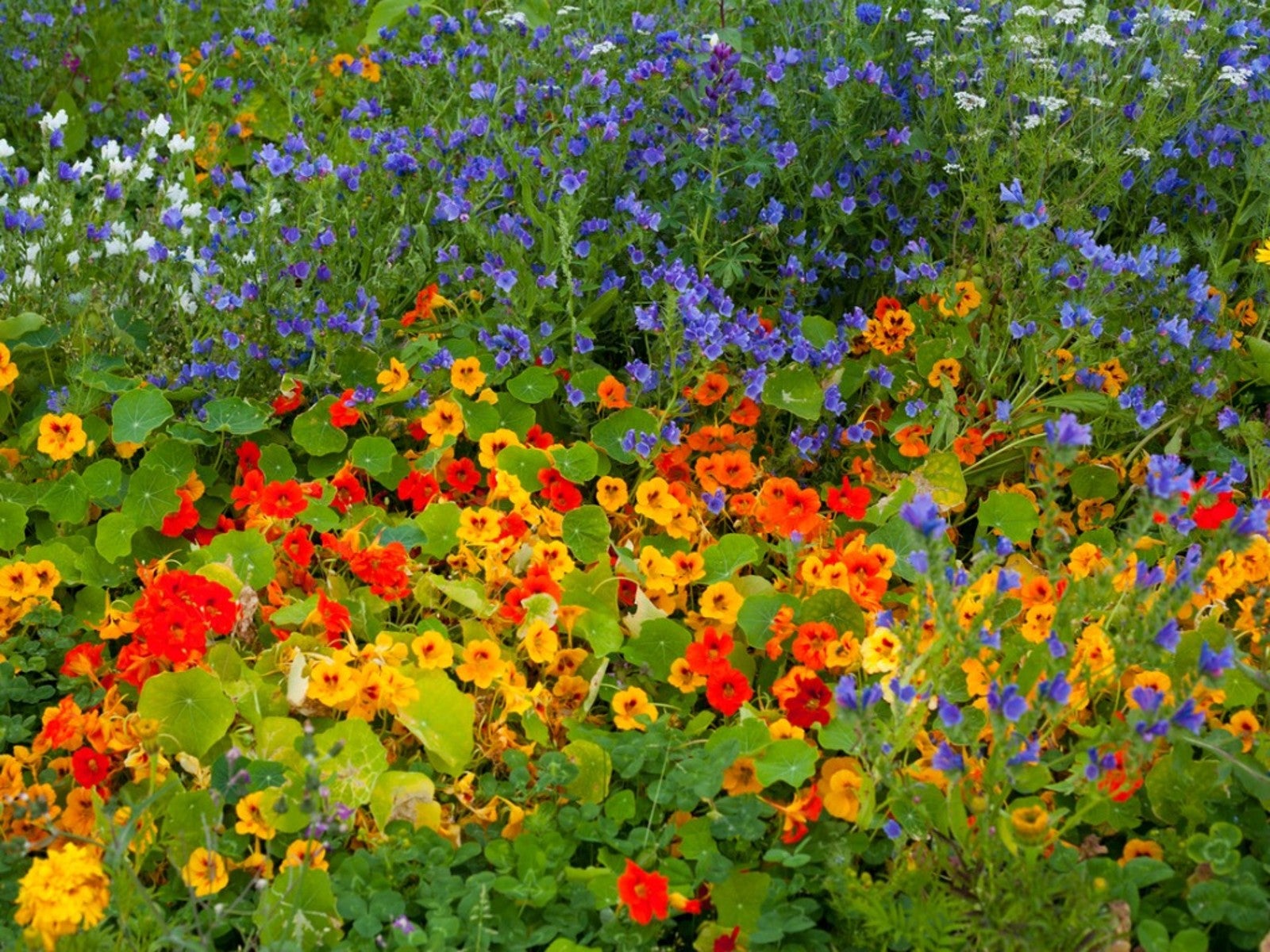Discover how to grow nasturtiums in Canada for beauty, flavour, and pest control. Learn how this easy-care edible flower doubles as a natural trap crop to protect your vegetables.

Discover how to grow nasturtiums in Canada for beauty, flavour, and pest control.
At DH Garden Centre here in Vancouver, we often meet gardeners—new and experienced—who are laser-focused on their edible crops: tomatoes, kale, lettuce, beans. And that’s a good thing. But today, I want to share a secret that’s helped transform so many of our clients’ gardens from ordinary to resilient, colourful ecosystems full of life.
That secret is the nasturtium—a plant that’s easy to grow, beautiful to look at, completely edible, and shockingly effective as a natural pest control solution.
Whether you’re in Kitsilano with a small urban patio or on the outskirts of Burnaby with raised beds and rows of brassicas, nasturtiums deserve a place in your garden.
Let me walk you through exactly why—and how—to grow them successfully in the Canadian climate.
What Are Nasturtiums? And Why Should You Care?
Nasturtiums (Tropaeolum majus) are flowering plants native to Central and South America. They’ve been cultivated around the world not just for their beauty, but for their practical benefits in the garden. Here in Canada, they’re grown as annuals, blooming from late spring to early fall.
Their round, lily pad-shaped leaves and jewel-toned flowers make them a visual treat. But beyond the looks, nasturtiums are:
-
Edible: Both leaves and flowers are peppery and rich in vitamin C.
-
Pollinator magnets: Bees, butterflies, and hummingbirds love them.
-
Pest traps: Aphids, whiteflies, and cabbage loopers flock to nasturtiums, sparing your main crops.
-
Soil builders: Their roots break up compact soil and can improve structure.
That’s right. One humble plant offers beauty, food, and protection—all without needing much from you.

In Canada, Nasturtiums are grown as annuals, blooming from late spring to early fall.
Why Canadian Gardeners Undervalue Nasturtiums
When I first started my landscaping journey more than 25 years ago, I didn’t give nasturtiums much thought. I was focused on the “main characters” of the vegetable world—broccoli, lettuce, tomatoes.
But nasturtiums aren’t just filler.
They’re functional.
They’ve quietly saved thousands of Canadian gardens from early pest devastation—especially in spring when aphids strike fast and hard. They’re also one of the few easy-to-grow edible flowers that work well even in urban environments.
Too many gardeners wait until they have a pest problem before taking action. Nasturtiums flip that on its head: they’re a beautiful, proactive defense.
Best Nasturtium Varieties for Canadian Gardens
🧡 Jewel Mix
This vibrant seed mix includes yellows, reds, and oranges. It germinates easily and grows fast—perfect for kids and beginner gardeners.
🖤 Black Velvet
A moody, elegant variety with deep red-black petals and bright yellow throats. Adds drama to ornamental beds and salad bowls alike.
🔥 Orchid Flame
A showstopper. Red tips burst from a yellow centre, resembling a mini firework. Incredible in edible flower arrangements.
🍑 Apricot
Soft and romantic with pale orange blooms, this variety thrives in partial shade.
❄️ Alaska
The leaves on this plant are just as stunning as the flowers—cream-flecked and eye-catching. Great for containers or border gardens.

Best Nasturtium Varieties for Canadian Gardens
How to Grow Nasturtiums in Canada (Step by Step)
Let’s break down exactly how to grow nasturtiums successfully in our Canadian climate.
1. When to Plant Nasturtiums
In Canada, direct sow after your last frost—which means:
-
Vancouver: Late March to early April
-
Toronto/Calgary: Mid-May
-
Montreal: Late May
You can also start seeds indoors 2–3 weeks earlier if you want a head start, especially in cooler zones.
2. Starting from Seed
Nasturtium seeds are large—about the size of a pea—which makes them perfect for beginners or kids.
Tips:
-
No soaking needed, though it may help germination speed.
-
Sow ½ inch deep in well-draining soil.
-
Space 10–12 inches apart for bush varieties, or 18+ inches for trailing types.
Use our DH Seed Starter Kits and soil mixes to give your nasturtiums the best start.
3. Sunlight Needs
Nasturtiums love full sun but will also grow in partial shade. Here’s what changes depending on light:
-
Full sun: More blooms, brighter colours.
-
Shade: More leaves, fewer flowers. Great for edible use.
If you’re growing for pest control or flowers, stick to at least 6 hours of direct sun per day.
4. Soil & Fertilizer
Nasturtiums are low-maintenance. They tolerate poor soil and actually perform worse with too much fertilizer—which encourages leafy growth at the expense of blooms.
Ideal conditions:
-
Well-draining soil (our Organic Raised Bed Mix is perfect)
-
No additional fertilizer needed
Pro tip: They thrive in clay, sand, or even rocky soils—just keep them moist and not soggy.
5. Watering
Aim for 1–1.5 inches of water per week, especially during hot summers. The leaves will tell you when they’re thirsty—if they start to droop or shrivel, it’s time to water.
Nasturtium as a Natural Trap Crop
Now here’s where nasturtiums shine—as a companion plant.
We recommend planting nasturtiums alongside:
-
Tomatoes
-
Peppers
-
Broccoli
-
Kale
-
Cabbage
-
Beans
Why? Because nasturtiums act as a trap crop, attracting aphids, whiteflies, and even squash bugs away from your vegetables.
Instead of spraying chemicals, just let the bugs attack your nasturtiums—and remove those plants if infestations get too heavy.
:strip_icc():format(webp)/7000661-8600-357_preview1-e5cc5aa548d54ee195312f094e8db544.jpg)
Instead of spraying chemicals, just let the bugs attack your nasturtiums—and remove those plants if infestations get too heavy.
Gardener’s Note:
Not all aphids are equal. Some species prefer kale, others go for nasturtiums. But overall, we’ve seen a significant reduction in pest pressure by interplanting nasturtiums near our clients’ most vulnerable crops.
Try tucking them around the edges of your raised beds or along pathways for a functional border that also looks great.
Edible Uses of Nasturtiums
Not only are nasturtiums gorgeous, they’re 100% edible—from leaf to seed pod.
🌿 Leaves
Taste: Peppery, slightly spicy
Use: Wraps, salad greens, quick garden snacks
Try this recipe:
-
Nasturtium leaf
-
Cream cheese
-
A slice of preserved lemon
-
Sprinkle of salt
Roll it up like a taco. Garden-to-table in 2 minutes.
🌸 Flowers
Taste: Mildly spicy with a sweet finish
Use: Garnish for salads, cakes, or fancy dinner plates
Looks especially stunning with Orchid Flame and Jewel Mix.
🫙 Seed Pods = “Nasturtium Capers”
-
Harvest the unripe green seed pods.
-
Soak in saltwater overnight.
-
Pickle with vinegar, garlic, and spices.
They taste like true capers—zesty and briny—but homegrown.
These make a beautiful homemade gift when packed in mason jars.
Companion Planting with Nasturtiums
Need more reasons to plant them? Nasturtiums also:
-
Attract pollinators
-
Deter cucumber beetles and squash bugs
-
Break up soil compaction with deep roots
-
Fill in gaps for natural weed suppression
They’re a perfect fit for no-dig gardens, balcony beds, and raised containers alike.

Companion Planting with Nasturtiums
Common Nasturtium Problems (And Why They’re Rare)
Nasturtiums are ridiculously forgiving—but let’s prep you anyway.
1. Too Many Leaves, No Flowers?
You may have over-fertilized. Stop feeding and increase sunlight.
2. Leaves Turning Yellow?
Possible overwatering or poor drainage. Amend soil and reduce watering frequency.
3. Pest-Damaged Leaves?
Ironically, this might be a good sign—they’re working as trap crops! Remove infested leaves or replant as needed.
Final Thoughts from Darrell at DH Garden Centre
Over the years, I’ve helped hundreds of Vancouver gardeners turn their patios, yards, and balconies into thriving green spaces. And the one piece of advice I always give?
Don’t underestimate the humble nasturtium.
It’s not just a flower. It’s a pollinator beacon, a pest trap, an edible green, and a statement plant. Best of all? It thrives in Canadian gardens with very little care.
So this season, instead of just planting kale and tomatoes—tuck a few nasturtiums into the mix.
You might be surprised how much healthier and livelier your garden becomes.
🌱 Ready to Start Growing?
We carry all the nasturtium varieties mentioned in this article, as well as organic soil, seed trays, and companion planting guides at:
📍 DH Garden Centre
3742 West 10th Avenue, Vancouver, BC V6R 2G4
📞 604-929-7335
🛒 Shop Online 24/7
📸 Follow us: Instagram | Facebook
Let’s grow something vibrant and resilient together.

